Arena Pro Swim Series at AustinJul 3, 2017 by Ben Colin
Part II: The Art Of Scheduling The Pro Swim Series
Part II: The Art Of Scheduling The Pro Swim Series
This article compares and contrasts USA Swimming's Arena Pro Swim Series and the FINA World Cup and offers solutions to improve scheduling for the arena pro swim series.

In case you missed Part I of "Diving Into The Arena Pro Swim Series," you can check it out HERE to read how attention is building.
To most, there seems to be no challenger against the arena Pro Swim Series -- which just recently wrapped up Saturday night at the Phillips 66 National Championships in Indianapolis. Here in the United States, it is the only big show in town. USA Swimming created the series to act as the main attraction outside of the championship season. As a matter of fact, Nationals was just added as a stop on the series this year.
The idea that the Pro Swim Series is going to contain the National Team in its entirety is currently a myth, but it shouldn't be. No one skips Olympic Trials or Nationals, so why are there members missing at stops along the way?
One of USA Swimming's biggest selling points for the series is that it is the largest multi-event swim series in the country. With names like Katie Ledecky, Simone Manuel, Caeleb Dressel, and Nathan Adrian attending, swimming fans are going to be paying attention.
As time goes on, more and more meets will hit the stage and attract swimmers to compete. USA Swimming has two options:
1.) Allow other meets to draw swimmers away from their series
2.) Make the Pro Swim Series a priority over other competitions
In terms of other meets that draw swimmers from the Pro Swim Series, nothing compares to the FINA sponsored Swimming World Cup. USA Swimming, and subsequently FINA, have tried finding ways to make their meets a priority for athletes. Two key components have contributed to dwindling clashes between the two.
The first component is scheduling. The Pro Swim Series runs from January through the summer season. The World Cup is in the fall and winter. Neither event, in the current format, directly lands on the same date. "It's scheduled in such a way that it shouldn't be a competition for other meets," Carol Zaleski, the FINA Technical Swimming Committee Chair, said of the World Cup.
The second component is location. The United States hasn't hosted a World Cup event since 2006 in Long Island, New York. No World Cup, no problem for the Pro Swim Series. Right?
"In the past, the United States hasn't felt that it was worthwhile," Zaleski said. "It maybe isn't as important to the United States as it is other parts of the world where they are looking for top level competition."
For athletes around the world, these meets offer an opportunity to race top tier international talent in multiple different locations around the globe. The World Cup, unlike the Pro Swim Series, isn't tied to a specific country.
Still, international athletes from all over have opted to participate in the Pro Swim Series. While Zaleski praised the World Cup for pulling swimmers away from their own communities, the Pro Swim Series still presents athletes with the world's fastest and deepest field of competition.
Beyond the FINA World Cup, there are other meets competing against the Pro Swim Series. Numerous other international and domestic events take place that still pose a threat when it comes to athletes and coaches choosing which meets to compete in.
"On any given weekend, there are numerous competition opportunities across the country that swimmers choose to attend," USA Swimming National Events Director Dean Ekeren said.
For example, while the Santa Clara Pro Swim Series was happening in California, Club Wolverine stayed home and competed in Ann Arbor. The University of Michigan club team made the choice not to travel across the country to swim that weekend.
"Events have been created specifically to offer a smaller, lower-profile option for elite athletes," Ekeren said. "It is to not be as disruptive to their training."
As Ekeren alluded to, USA Swimming knows why other high profile meets are run in competition to the Pro Swim Series. Their response still needs to be that on Pro Swim Series weekends the best athletes are competing in their meet.
USA Swimming aligning the Pro Swim Series with the common season plan will result in more National Team level athletes participating. They are already doing this to an extent with each meet designed to fall approximately a month apart in most cases.
Knowing where athletes are in their training, along with the proximity to championships meets, creates the ideal schedule for the Pro Swim Series. The only other issue is the NCAA.
The Pro Swim Series, in its early season meets January (Austin) through March (Indianapolis), has to compete with the collegiate schedule. USA Swimming has designed their annual calendar to end short course season in December. The NCAA season runs through March.
49% (22 out of 45) of last summer's Olympic Team was composed of current NCAA athletes and/or athletes who completed their eligibility in March of 2016. Missing that group from a meet seriously weakens the playing field. The possibility of separating the early Pro Swim Series meets and the college championships would make it possible for those members to attend.
USA Swimming has the luxury of nearly eight months to work with when scheduling. It allows them to mold the line up of meets around potential competitors and gives them a longer runway to market the meets around these athletes. To this point, they have scheduled well -- usually avoiding conflict.
Some National Team members still aren't in attendance, however. That needs to be the next major objective. Once USA Swimming has its entire contingent competing in each Pro Swim Series meet, it will evolve into a high profile target for international teams, such as when Team GB attended to Pro Swim Series in Indianapolis earlier this year.
Driving away the competition isn't the goal, that would simply hinder the sport. The goal is to make the arena Pro Swim Series the go to series around the world. Scheduling and planning the meet in a way that leaves no room for excuses when someone isn't competing.
---
To most, there seems to be no challenger against the arena Pro Swim Series -- which just recently wrapped up Saturday night at the Phillips 66 National Championships in Indianapolis. Here in the United States, it is the only big show in town. USA Swimming created the series to act as the main attraction outside of the championship season. As a matter of fact, Nationals was just added as a stop on the series this year.
The idea that the Pro Swim Series is going to contain the National Team in its entirety is currently a myth, but it shouldn't be. No one skips Olympic Trials or Nationals, so why are there members missing at stops along the way?
One of USA Swimming's biggest selling points for the series is that it is the largest multi-event swim series in the country. With names like Katie Ledecky, Simone Manuel, Caeleb Dressel, and Nathan Adrian attending, swimming fans are going to be paying attention.
As time goes on, more and more meets will hit the stage and attract swimmers to compete. USA Swimming has two options:
1.) Allow other meets to draw swimmers away from their series
2.) Make the Pro Swim Series a priority over other competitions
The Competition
In terms of other meets that draw swimmers from the Pro Swim Series, nothing compares to the FINA sponsored Swimming World Cup. USA Swimming, and subsequently FINA, have tried finding ways to make their meets a priority for athletes. Two key components have contributed to dwindling clashes between the two.
Eliminating Scheduling Conflicts
The first component is scheduling. The Pro Swim Series runs from January through the summer season. The World Cup is in the fall and winter. Neither event, in the current format, directly lands on the same date. "It's scheduled in such a way that it shouldn't be a competition for other meets," Carol Zaleski, the FINA Technical Swimming Committee Chair, said of the World Cup.
Location, Location, Location
The second component is location. The United States hasn't hosted a World Cup event since 2006 in Long Island, New York. No World Cup, no problem for the Pro Swim Series. Right?
"In the past, the United States hasn't felt that it was worthwhile," Zaleski said. "It maybe isn't as important to the United States as it is other parts of the world where they are looking for top level competition."
For athletes around the world, these meets offer an opportunity to race top tier international talent in multiple different locations around the globe. The World Cup, unlike the Pro Swim Series, isn't tied to a specific country.
Still, international athletes from all over have opted to participate in the Pro Swim Series. While Zaleski praised the World Cup for pulling swimmers away from their own communities, the Pro Swim Series still presents athletes with the world's fastest and deepest field of competition.
Pro Swim Series Barriers
Beyond the FINA World Cup, there are other meets competing against the Pro Swim Series. Numerous other international and domestic events take place that still pose a threat when it comes to athletes and coaches choosing which meets to compete in.
"On any given weekend, there are numerous competition opportunities across the country that swimmers choose to attend," USA Swimming National Events Director Dean Ekeren said.
For example, while the Santa Clara Pro Swim Series was happening in California, Club Wolverine stayed home and competed in Ann Arbor. The University of Michigan club team made the choice not to travel across the country to swim that weekend.
"Events have been created specifically to offer a smaller, lower-profile option for elite athletes," Ekeren said. "It is to not be as disruptive to their training."
As Ekeren alluded to, USA Swimming knows why other high profile meets are run in competition to the Pro Swim Series. Their response still needs to be that on Pro Swim Series weekends the best athletes are competing in their meet.
USA Swimming aligning the Pro Swim Series with the common season plan will result in more National Team level athletes participating. They are already doing this to an extent with each meet designed to fall approximately a month apart in most cases.
Knowing where athletes are in their training, along with the proximity to championships meets, creates the ideal schedule for the Pro Swim Series. The only other issue is the NCAA.
NCAA Season Challenges
The Pro Swim Series, in its early season meets January (Austin) through March (Indianapolis), has to compete with the collegiate schedule. USA Swimming has designed their annual calendar to end short course season in December. The NCAA season runs through March.
49% (22 out of 45) of last summer's Olympic Team was composed of current NCAA athletes and/or athletes who completed their eligibility in March of 2016. Missing that group from a meet seriously weakens the playing field. The possibility of separating the early Pro Swim Series meets and the college championships would make it possible for those members to attend.
USA Swimming has the luxury of nearly eight months to work with when scheduling. It allows them to mold the line up of meets around potential competitors and gives them a longer runway to market the meets around these athletes. To this point, they have scheduled well -- usually avoiding conflict.
Some National Team members still aren't in attendance, however. That needs to be the next major objective. Once USA Swimming has its entire contingent competing in each Pro Swim Series meet, it will evolve into a high profile target for international teams, such as when Team GB attended to Pro Swim Series in Indianapolis earlier this year.
Driving away the competition isn't the goal, that would simply hinder the sport. The goal is to make the arena Pro Swim Series the go to series around the world. Scheduling and planning the meet in a way that leaves no room for excuses when someone isn't competing.
---
The best swimming coverage. Straight to your inbox.
Don't miss breaking news, feature stories, event updates, and more. Sign up for the FloSwimming mailing list today.Related Content
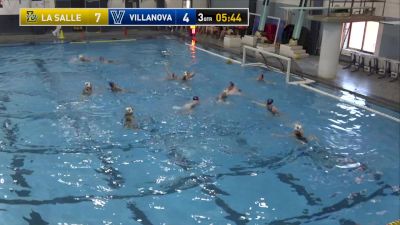 Replay: Le Salle vs Villanova - WWP - 2024 La Salle vs Villanova | Apr 7 @ 3 PM
Replay: Le Salle vs Villanova - WWP - 2024 La Salle vs Villanova | Apr 7 @ 3 PMApr 7, 2024
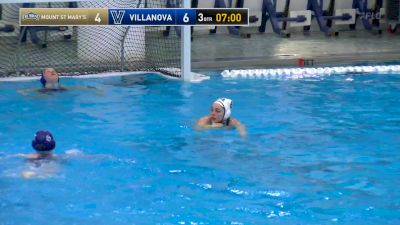 Replay: Mount St. Mary's vs Villanova - WWP - 2024 Mount St. Mary's vs Villanova | Apr 6 @ 7 PM
Replay: Mount St. Mary's vs Villanova - WWP - 2024 Mount St. Mary's vs Villanova | Apr 6 @ 7 PMApr 7, 2024
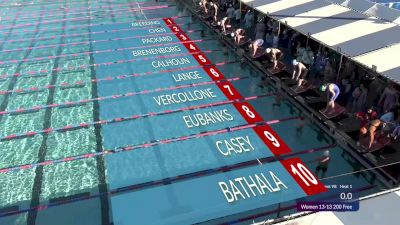 Replay: Finals - 2024 ISCA East Coast Elite Showcase | Apr 6 @ 4 PM
Replay: Finals - 2024 ISCA East Coast Elite Showcase | Apr 6 @ 4 PMApr 7, 2024
 Replay: Prelims Locker Side - 2024 ISCA East Coast Elite Showcase | Apr 6 @ 8 AM
Replay: Prelims Locker Side - 2024 ISCA East Coast Elite Showcase | Apr 6 @ 8 AMApr 6, 2024
 Replay: VMI vs Villanova - WWP - 2024 VMI vs Villanova | Apr 6 @ 11 AM
Replay: VMI vs Villanova - WWP - 2024 VMI vs Villanova | Apr 6 @ 11 AMApr 6, 2024
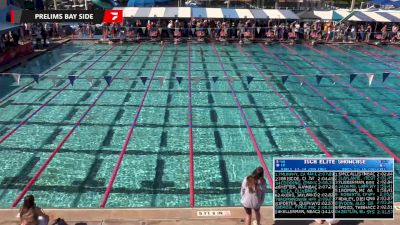 Replay: Prelims Bay Side - 2024 ISCA East Coast Elite Showcase | Apr 6 @ 9 AM
Replay: Prelims Bay Side - 2024 ISCA East Coast Elite Showcase | Apr 6 @ 9 AMApr 6, 2024
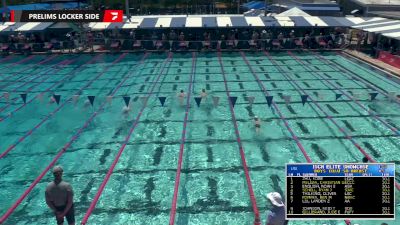 Replay: Prelims Locker Side - 2024 ISCA East Coast Elite Showcase | Apr 5 @ 8 AM
Replay: Prelims Locker Side - 2024 ISCA East Coast Elite Showcase | Apr 5 @ 8 AMApr 6, 2024
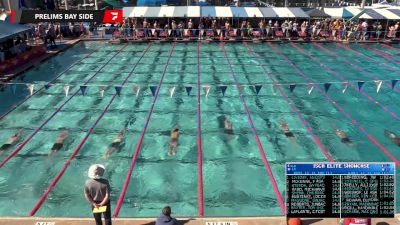 Replay: Prelims Bay Side - 2024 ISCA East Coast Elite Showcase | Apr 5 @ 8 AM
Replay: Prelims Bay Side - 2024 ISCA East Coast Elite Showcase | Apr 5 @ 8 AMApr 5, 2024
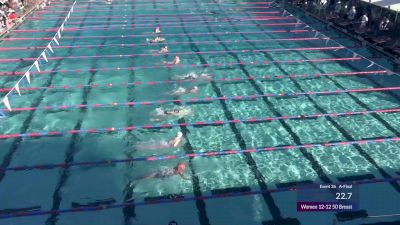 Replay: Finals - 2024 ISCA East Coast Elite Showcase | Apr 4 @ 4 PM
Replay: Finals - 2024 ISCA East Coast Elite Showcase | Apr 4 @ 4 PMApr 5, 2024